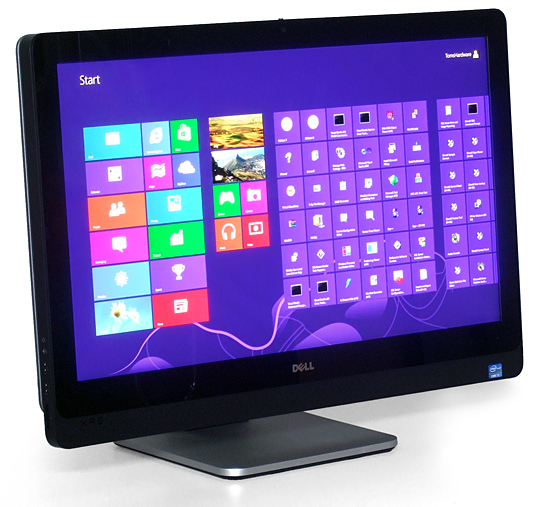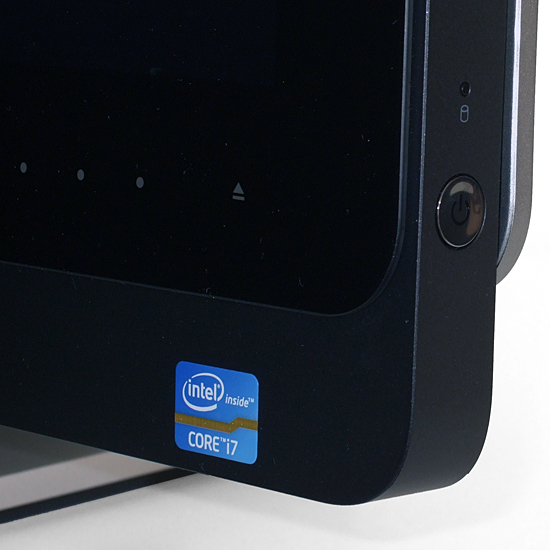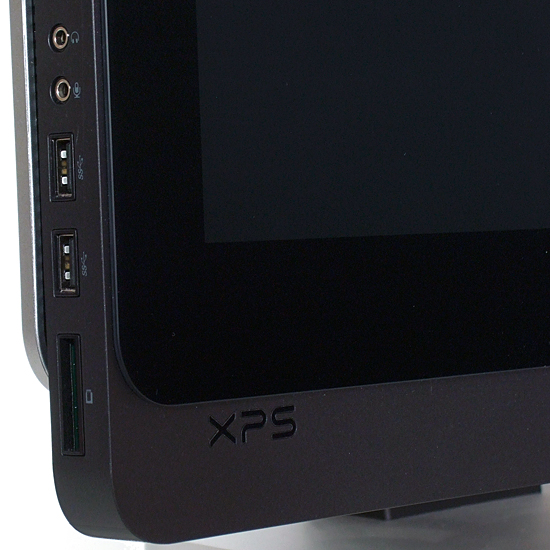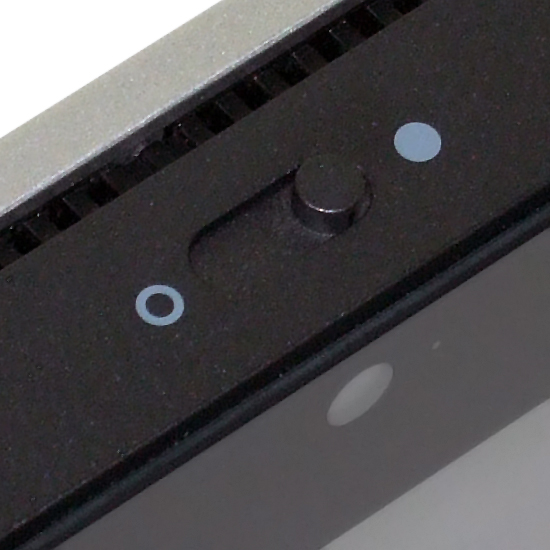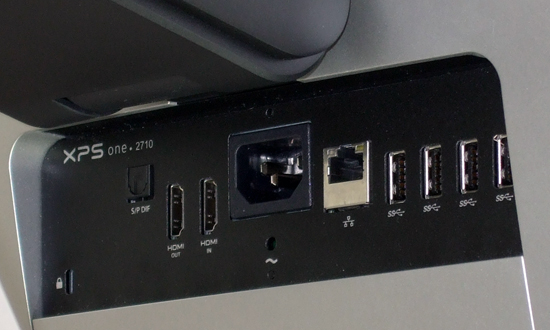Dell XPS One 27: Can An All-In-One Make Us Love Windows 8?
Windows 8 is unquestionably intended to create consistency between consoles, tablets, phones, and the PC. But the desktop world is still largely without touch input. Can Dell's XPS One 27 make the Windows 8 experience better with a gorgeous touchscreen?
Getting To Know The XPS One 27
The familiar Windows 8 UI is where we get the most touch functionality from Dell’s fabulous QHD (2560x1440) WLED TFT LCD panel. An 89° viewing angle and approximately 60° of tilt help you get more up close and personal to a device you'd typically look at from a foot or more back, while edge-to-edge glass reduces the likelihood that small spills might enter a seam and damage its electronics.
Height adjustment is this PC's biggest limitation, with the upper arm's narrow range of motion stopping the vertical screen approximately 1.75” above the desk. Tilt it back, and the arm lowers enough to give nearly 5.5” of drop. These constraints keep weight centered over the base to keep the system from tipping over.
A power button and hard drive activity LED are found on the chassis model 2710’s right edge, while touch controls occupy the lower-right corner of its face. The touch control all the way to the right operates a slot-loaded optical drive, with Blu-ray read support on our review unit.
The left edge hosts microphone and headphone jacks, USB ports, and an 8-in-1 media card interface. If you didn't already look at the spec table on page one, you might be surprised to learn that the USB ports are 3.0-compliant, even though they don't bear the standard's familiar blue color. The media drive also adds a feature—xD capability—to the expected SD, MMC, and MS standards.
Do you worry about spy software hijacking your camera? Dell’s mechanical shutter should help alleviate those concerns by physically hiding the 2 MP sensor's lens.
The 2710’s rear panel provides four USB 3.0 ports—again without the expected blue color coding—along with a gigabit Ethernet network jack, digital optical audio, HDMI out, HDMI in, and a full-sized PC power jack. HDMI input is pass-through-only, allowing the unit to act as a standalone display.
Though not present on this unit, Dell also offers an internal mini-PCIe TV tuner card on all four XPS One 2710 models.
Get Tom's Hardware's best news and in-depth reviews, straight to your inbox.
Current page: Getting To Know The XPS One 27
Prev Page Meet Dell's XPS One Touch 27 Next Page Inside The XPS One 27-
JohnUSA A very important and crucial point: Touch screens are doomed to fail as users will find out soon that their arm, wrist and hand will get tired and sore soon as they keep extending their arms to use this pain producing gadget.Reply
Who ever invented the desktop touch monitor should be shot. -
fnh JohnUSAA very important and crucial point: Touch screens are doomed to fail as users will find out soon that their arm, wrist and hand will get tired and sore soon as they keep extending their arms to use this pain producing gadget.Who ever invented the desktop touch monitor should be shot.Reply
There's probably some use for a touchscreen-desktop monitor productivity-wise.
But as a Windows 8 saviour? Hell no! -
mayankleoboy1 The alternate review is a great Value-addition to this article.Reply
Its important to get a informal, subjective review from a general user. Numbers are very important, but they dont tell the complete picture.
+1 for more "Average Joe" impressions in gadget reviews. -
killerclick Touchscreens on desktops will never go mainstream. It's just a fad they're trying to push, like 3D was a few years back. People don't like to have to sit close to screens and use their arms to control them - that's why TVs have remotes. Touchscreens on desktops solve nothing and improve nothing. Sure it's more intuitive to touch something than point and click, but anyone who can't figure out pointing and clicking won't get much out of using a computer anyway.Reply
Touchscreens on laptops might suck less as a concept, but laptop screens suck by design because they're so small.
-
vaughn2k JohnUSAA very important and crucial point: Touch screens are doomed to fail as users will find out soon that their arm, wrist and hand will get tired and sore soon as they keep extending their arms to use this pain producing gadget.Who ever invented the desktop touch monitor should be shot.I find these all-in-one touch screens helpful for kiosks, data centers, production, (kitchen - maybe :P), POS, as a replacement for other tools such as keyboards and mouse - simply for convenience. But yes, not a tool to be used for 8hours work in-front of a computer. And if you would have this for those application I mentioned, this is too damn expensive and ludicrous!Reply -
ta152h Quick answer, no.Reply
Touchscreen has no place on a desktop, unless you have Felix Unger with plastic gloves touching it. It's messy, and it's hard not to feel like a retard while using it.
This is a solution in search of a problem. I haven't heard too many complaints on the keyboard/mouse interface. I have heard plenty of complaints about Windows 8. -
thinslicedbread Every time Tom's (or any other site for that matter) posts anything about Windows 8 or touch-screen PC's you always, ALWAYS, get people who instantly denounce such products almost as if they are "of the devil himself". As a power user, or anyone who actually comes to Tom's to read "tech-y" articles - Yes, Windows 8 is probably not for you. That's fine and dandy. But I get so tired of people just instantly proclaiming Windows 8 a failure because of the changes that Microsoft has made to it. While no, it does not have a start button, anyone who has used it for more than a day can tell you that it doesn't really matter. I tap the Windows key and start typing what I want and Windows finds it for me. The start screen gives me a quick overview of important applications without having to actually OPEN the application to find the information. I love my ASUS Vivo Tablet (Windows RT), and I find myself using that more often than my laptop or desktop when I just want to look something up or read and respond to an email.Reply
Case in point: I set my girlfriend up with what I thought was a really nice setup. A touch screen AIO in her spare room. It had (read: HAD) Windows 7 on it. She was constantly complaining about how she hated it when it either did not register her touches or the limited gestures that I so painfully set up. She went months without even turning the damn thing on. She complained that she couldn't do anything with it because it was just too hard to get a simple task done.
Windows 8 comes out last October and I figure I'd give it a shot and if she still didn't like it, I'd have an extra computer in my man cave for something. I can't keep her off the thing. She absolutely loves it. She loves the live tiles, how it recognizes her gestures, how easy it is to navigate. I could go on...
What I wish people would realize is that Windows 8, while it will probably not be as widely accepted as our beloved Windows 7, it is still a pretty solid step forward. If you are a power user (myself included) you will probably never install W8 on your desktop or even your laptop. But it is a fantastic piece of software that can change how people use computers. -
magic couch On the file compression page the graphs show winRAR being faster than 7zip yet the article says 7zip is faster. Were the graphs reversed?Reply
